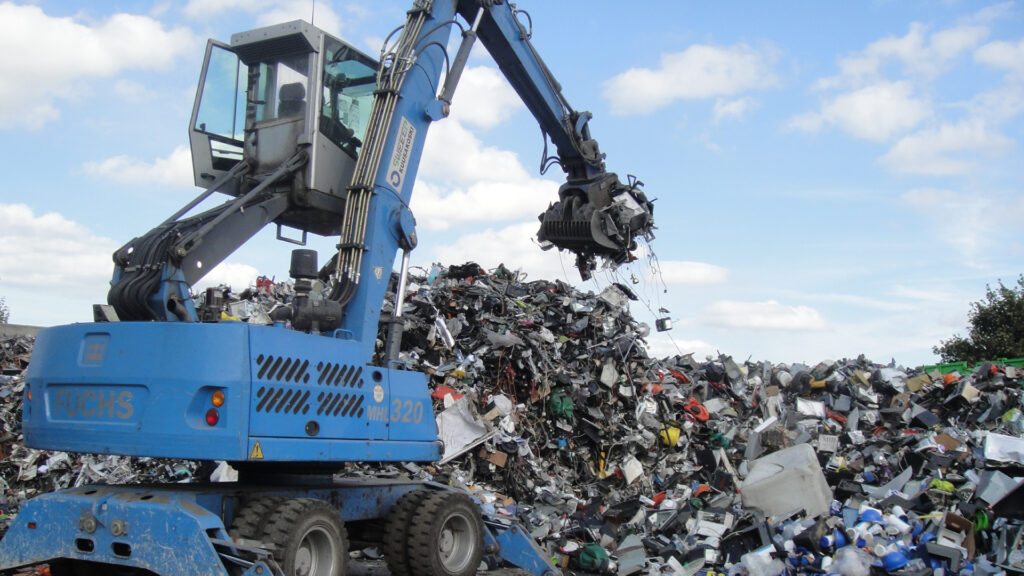
The New South Wales parliament has been presented with a members bill which seeks to introduce a state-wide ban on the disposal of e-waste to landfill. ANZRP is supportive of initiatives that work to eliminate the discarding of e-waste to landfill; however, we are firm in the view that a landfill ban is a very blunt tool. On its own, it will not be sufficient to achieve the desired outcomes. The current widespread practice of disposal of e-waste to landfill reflects market failure. To address this market failure, consideration needs to be given to a range of actions and initiatives that drive the circular economy and the overall business case for the community and industry to do better. In Australia we already do this on a national scale with computer and television e-waste. Since the establishment of the National Television and Computer Recycling Scheme (NTCRS) in 2012 the recovery and recycling of end-of-life television and computers has risen from less than 10% to now almost 80% of the volume placed that is placed on the market. Whilst there is still room for further scheme improvements to enhance the NTCRS, it should be recognised that manufacturers and brand owners take responsibility for the products they distribute and ensure that valuable resources are recovered for future economic use.
The NTCRS therefore provides valuable learning and ANZRP was pleased to contribute to the policy conversation by making a formal submission to the New South Wales Parliament and the Hon. Penny Sharpe, Minister for the Environment. In the submission, ANZRP expressed in principle support for the proposed e-waste landfill ban while also using the opportunity to call for broader, more comprehensive policy action.
PonyUp for Good is a certified social enterprise utilising a platform for managing surplus and end-of-use technology and equipment. Fifty percent of profits generated are redirected towards providing nutritious meals for Australians facing food insecurity. The work of PonyUp for Good and ANZRP have a very strong synergy as both organisations strive to enhance the circular economy and deliver a triple bottom line impact.
Benefits of the e-waste landfill ban
The e-waste ban can play a constructive role in:
- Reducing the loss of valuable resources (when they are disposed of to landfill)
- Potentially reducing the instances and volume of materials that are illegally dumped
- Boosting the domestic circular economy including through the retention of critical minerals
- Stimulating investment and economic activity, including employment in the circular economy
- Reducing the instances of battery-related fires and the harm these pose to workers in the sector and the damage they cause to infrastructure
- Minimising the risk of leaching of harmful substances such as lead, mercury, cadmium and flame retardant (materials that are commonly found in electrical and electronic products or e-products) into soil and groundwater
- Avoiding carbon dioxide (CO2) emissions associated with the manufacturing of virgin steel, other metals and plastics
What more can be done to prevent e-waste going to landfill?
ANZRP’s submission to the NSW Parliament focussed heavily on what complimentary action the government and industry must take to not only avoid the discarding of e-waste to landfill, but also instituting a system whereby waste is reduced, economic opportunities are seized upon, and optimum environmental outcomes are derived. These recommendations, in brief, fall on the five themes listed below:
- Product stewardship
The proposed landfill ban should be underpinned by a nationally consistent product stewardship solution for the e-waste products that are targeted and should capture small electrical and electronic products (SEEE) and solar photovoltaic systems, as has been previously proposed by the Australian government.
- Circular Economy
A ban on e-waste to landfill will result in an increase of materials that are recovered for recycling. It is vital therefore that governments work with industry to strengthen off-take markets for the recyclate, otherwise the landfill ban will be in vain. This is particularly true for plastics, which are used widely in e-products and make up a significant proportion of the recovered material by weight.
- Infrastructure and capability
There will be a need to invest in and build on the collection, logistics and processing infrastructure for e-waste. This investment needs to cater for both increased volumes of e-waste along with capability to deal with different material mixes that emanate from SEEE and products such as solar panels.
- Standards and enforcement
It is important to note that the introduction of landfill bans in and of themselves will not drive the desired outcomes alone. ANZRP believes that it is imperative that regulations are coupled with the setting of appropriate standards for the management of e-waste and having these robustly policed by environment protection and work, health and safety regulators. ANZRP recommends that it is a requirement that, along with a material recovery target, recyclers be certified to AS/NZS 5377:2013 (or an equivalent e-waste recycling standard) and that is applied to all e-waste recyclers processing product over and above an agreed volume threshold.
In addition, the measures implemented as part of regulations should impose reporting regimes that provide real, timely and transparent data and take a chain-of-custody approach. This includes all steps in the supply chain through to final disposition (be that in Australia or overseas).